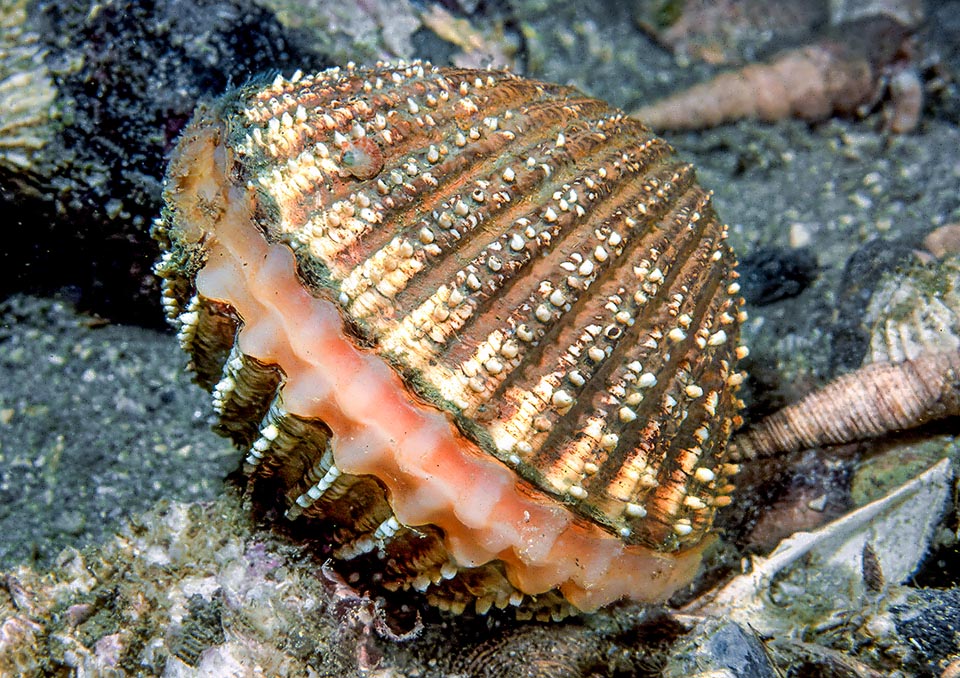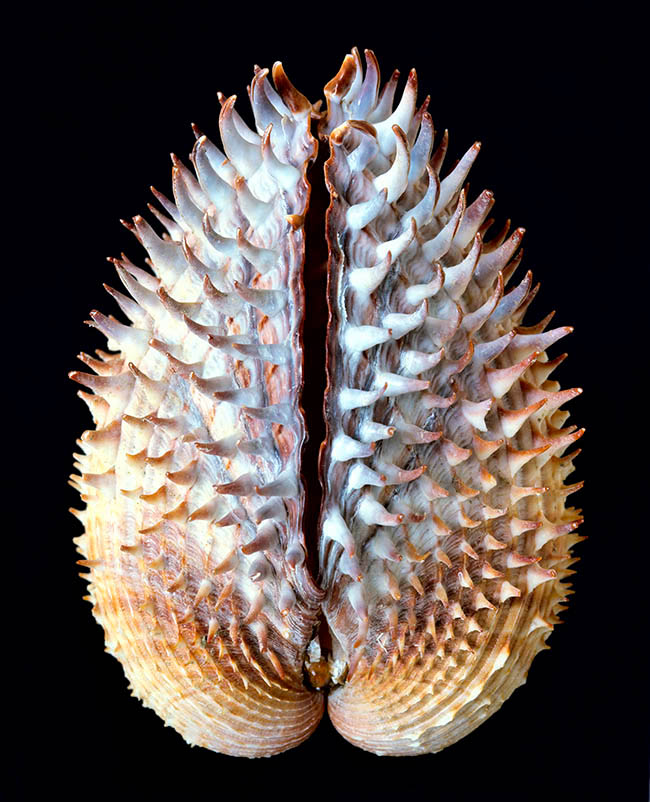Family : Cardiidae

Text © Dr Domenico Pacifici

English translation by Mario Beltramini

The Spiny cockle (Acanthocardia aculeata), known also as Cardium aculeatum, is a splendid marine bivalve, relatively chilly, very common in sublittoral muddy sands of Mediterranean Sea and, after the Strait of Gibraltar, the Atlantic coasts from the Norwegian islands Lofoten up to the Moroccan coasts of western Africa © Jim Greenfield
Acanthocardia aculeata Linnaeus, 1758 is a bivalve mollusk belonging to the family Cardiidae.
Its common name, spiny cockle, besides describing romantically the shape of this fascinating animal perfectly translates the generic term Acanthocardia from the Greek “ἄκανθα” (akantha) “spine” and “καρδία” (kardia) that means “heart”. Conversely, the specific term aculeata originates from the Latin “aculeatus”, that is, provided with aculei, spines.
Zoogeography

The bright red foot mollusk feeds on phytoplankton. The 5-11 cm shell with its heart-shaped symmetrical valves, is adorned by about twenty radial ribs that extend from within the shell up to the outer borders © Giuseppe Mazza
Acanthocardia aculeata is a mollusk very common in the Mediterranean, especially between the French and Spanish coasts.
Moreover, it is present in the north-eastern Atlantic, from the Norwegian islands Lofoten up to the Moroccan coasts of western Africa.
Ecology-Habitat
The unbelievable adaptability of this species has allowed the colonization of a very ample belt of marine environment, going from10 to 100 m of depth.
It lives buried under the sand it digs with its strong foot, filtering out the phytoplankton and the particles in suspension thanks to its respiratory siphons emerging from the sediment.
Morphophysiology
Acanthocardia aculeata is a modestly sized bivalve and can reach the length of 10 cm, even if it is much more common by around 7 cm.
The shell is formed by two symmetrical valves of pale brown colour, incised by about twenty radial ribs that extend from within the shell up to the outer borders.
Each rib is equipped with white spines, sharp, of ever-increasing size as they approach the extreme edges. In the juvenile forms these spines are just outlined or have smaller dimensions.
The foot, used by the animal for moving in the sand or even making “leaps”, is long and robust, with the characteristic lively red colouration.
Ethology-Reproductive Biology
Acanthocardia aculeata is a protandrous hermaphrodite animal, a particular form of hermaphroditism where both gonads, male and female, are not present at the same time but develop over time, before as males, later on as females.
Synonyms
Cardium aculcatum Aradas & Benoit, 1872; Cardium aculeatum Linnaeus, 1758; Cardium aculeatum var. depressa J. T. Marshall, 1893; Cardium spinosum J. Sowerby, 1804.
→ To appreciate the biodiversity within the MOLLUSCS please click here.
